James Lloyd is back with the third part of his racquet history series called “A Head of The Game” – The Class of 95.
A Head of the Game – Part 3 – The Class of 95
In 1993, Head launched the PT57 mid-plus frame mold, one of my three ‘game-changing frame’ nominees. But why am I calling it the PT57 and not ‘The Radical Tour’ or ‘The Pro Tour 630’?
Well, the answer lies in the present day, via various marketing or naming strategies taken on by manufacturers, you see Wilson, as one example, had the ‘Pro Staff’. Within the ‘Pro Staff’ range, they have the Pro Staff 95, or 6.1 95 or whatever variant or name Classic, Hyper, nCode BLX, Amplifeel, Pro Labs, essentially it is a version based on the same thing, or the same or similar mold, give or take, sometimes it wasn’t even called a Pro Staff. Racket names can be confusing.
Until the ‘Blade’ came along, the ‘Pro Staff’ was pretty much THE players’ frame from Wilson on the ATP tour, regardless of its size, variant, or paint job. Of course, the Pro Staff still exists today in 97sq inch format as far as available retail variants, with the Wilson’ 95′ only available via Wilson’s online ‘pro-labs’ shop.
HEAD PT57
The Head PT57 is not just nominated as a game-changing frame because of one solitary frame. In my opinion, a game-changing frame is either an original and pioneer like the POG, or perhaps the Babolat Aero Pro Drive, but importantly I believe that ‘frames directly inspired by, or ‘direct descendants’ should be factored in.
I have seen others with the opinion that the Babolat’ Pure Drive’ was the game-changer, and I respect their opinions. However, the reason I did not choose the ‘Pure Drive’ is because it was not an original Babolat’ mold’, it started life as one of the Pro Kennex’ Destiny’ molds before Babolat made a lighter version of their own specification and sure, the ‘Pure Aero’ as we know it shares an identity, with the ‘Pure Drive’, but the way they play is totally different.
Babolat made that original ‘Aero’ frame, specifically for Rafael Nadal, who uses it to this day with approximately 17g extra lead applied to the hoop/handle, split 12g hoop 5g handle he tinkers, as do quite a few. When the ‘Pure Aero’ first came in the form of the ‘Aero Pro Drive’, the power was still there but the spin was off the scale, and when I tried it, I said out loud that whoever used it was cheating. I remember playing against someone hitting with a ‘Pure Drive’ and thinking, blimey… they are getting some easy power!
Easy power and spin vs feel and control
Easy power had been around long before. I couldn’t gather enough directional control in my short flirtation with the 100sq inch ‘Aero’, but it left a lasting impression and has gone on to spawn new variants of itself and a few 98sq inch versions. The current ‘VS98’ version is expected to become an all-time classic, as it is damned near close to the frame Carlos Alcaraz actually swings, apparently. No doubt there will be ‘updates,’ and in ten years’ time, people may wax lyrical about the mythical ‘original’ that is only available as a pro-stock, much like people have been filling tennis blogs with talk and fanfare revolving around the Head PT57.
By 1993, Head had long been known for its PT10 mold, aka The Head’ Prestige Pro/Classic 600′, essentially an old-school slightly more oval 89.5sq inch, thin beam super feel player’s frame. It is, a special stick. There are usually two camps, camp PT10 and camp PT57, however all descendants of the PT10 or ‘Prestige Mid’, ceased to be available with the frame size missing from last years’ Auxetic’ update. Head did pander to the PT10 with its ‘Liquidmetal and Flexpoint’ Prestige mid-plus frames. Those frames have the bridge appearance and similar color of a PT10 Prestige, while all other Prestige 95’s have the similar bridge and design of the PT57 mold.
Back in 1993, Head created the brand-new PT57 mold off the back of the new Agassi frame, rather than upsize the Prestige Mid, they Downsized Agassi’s Radical. This is not unusual as the original ‘Pro-Staff 85’ was developed from a bigger, older version. Twaron fibre had long been, and is still a much-lauded material when applied in a willing lay-up. Twaron is an aramid fibre, made using one process, Kevlar is also an aramid fibre but made with its own process. Both are particular high points in the tennis technology story, and many frames available today still use HM Graphite and an aramid fibre, so you could say that much innovation and new material inclusion has not necessarily ‘bettered the originals’, however, as Jonas (Tennisnerd) often relays, sometime just how a racket ‘feels’ is more important to whether you hit it harder or with more spin, because the feeling on contact can be an intricate part of your tennis enjoyment. Not everyone plays to compete and search constantly for self betterment, some play just for enjoyment. The ‘feel’ is also pretty damned important for a professional, but sometimes at an early development age, the lure of a racket contract and cost reduction while you try to make it on tour can over rule any sentimentality towards your preferred brand or frame, but that is another story, I might air my view on this, but each to their own.
I shall from here on use the terminology ‘Head 95’, which I think is fair
PT57 a Prestige?
The Head 95 frames, 20-21mm beam and 18×20 string patterns (usually) share so much in common that the grommets from a 2012 Head Radical 95 will fit frames from the early 1990s. CAP grommets from a 2008 Microgel Prestige can ‘cap-grommet’ any of the 1993-2008 frames, unless Liquidmetal/Flexpoint outer-ridged and even the TK293 cap grommets from the 2012 IG Prestige MP aka TGT292.2 can be wangled in to fitting an original Head 95. I think at some point I have mixed most grommets/bumpers on most of the Head 95 line, as specific availability is getting rarer.
The Head 95 frames from PT57 origin up to Youtek MP, in 18×20 format all have the same drill pattern and a DNA that can be traced through the ranges right back to the first, the original, from 1993. The difference is that where another manufacturer created and tinkered with one frame, one mold and one brand throughout the years, that original Head frame spawned not just one line of longevity, but two that have continued right to this day. The Head Prestige and the Head Radical. The Head Prestige would have possibly ceased to be produced without the change to Mid-Plus 95sq inch, debatable, but that PT57 original possibly saved the Prestige range and launched the Radical.
The PT57 was not a Prestige I hear people already mutter, no, indeed it was not, but that is what it ultimately would become. Head embarked upon 2-year constant new ‘updates’ or ‘variants’ as I prefer, ‘update’ and ‘upgrade’ is very subjective. Indeed, the original spawned the short-lived but most famous retail ‘Pro-Tour’ range and its ‘Ti Pro Tour’..’ update.’ There was also a ‘Ti Fire S.E.2’, which is maybe a very rare variant on the ‘Ti Fire’ range, possibly only available via pro-stock overspill, this frame in ‘Ti Fire pro edition- is usually a sister to a different, later mold from the Ti generation. Sure, different ‘mold numbers’ and ‘lay-ups,’ but put them all side by side and tell me to the naked eye what the differences are.
Going bigger
The Head range had started to have a bit of an identity crisis, in 1993 Head had launched a 660 sized Prestige Tour, launched in the same year as the 630 (95) sized Radical Tour and Pro Tour. However, the Prestige 600 for the entire 1990s to any player, WAS the Head Prestige, a small, midsized gorgeous looking 89.5sq inch frame.
Some Pro players and the vast majority of juniors had swapped to the 95sq inch mold though and this left Head with a bit of an identity/naming crisis with its frames. When I was young, there was the Head Prestige, also an Elite and Electra… and then a separate range of a wider beamed mold that spawned the ‘Genesis’, ‘Ventoris’, ‘Atlantis’, ‘Lady’ and ‘Discovery’ frames, Twaron fibred more aero shaped, more powerful frames. I used the Ventoris in my earlier teens, while those who had sponsorship deals tended to have the ‘Discovery’. You can see why Head made the Prestige 660, if you mate the Prestige classic 600 with the other 660 shape, you can see how the short-lived Prestige 660 came to life.
Head needed an equivalent to the Wilson 95, and throughout the 1990s while Agassi was rivaling Sampras’ dominance. While the Prestige 600 still proved popular, the Head Pro Tour 630 had started to win Grand Slam Titles, initially with Thomas Muster but more memorably with Gustavo Kuerten. Thomas Muster was an exceptional clay-court player with a remarkable story that saw him recover from a terrible accident to reach the summit of the sport, becoming World Number 1 in 1996, a truly incredible man. With the advent of new string technology, that Head Pro Tour 630 would show it had potential for great power and spin, touch and feel, it was quickly regarded as a frame of enormous versatility, and that is a key ingredient to its status. Versatility is all-important.
Wilson’s 95
Wilson’s 95 was an incredible frame, slices, stability and volleys were perhaps its stand out skill bases and it is probably top of the tree in this regard. It is still one of the most used frames on tour to this day, ask Dan Evans, Opelka, RBA or Kyle Edmund…. or Daniil. There is even a Head 95 frame with similar specs to a Wilson 95, the short-lived but much-loved Head Liquidmetal Radical’ Tour’.
Head’s 95 proved to be a versatile set of molds, suiting a wider variety of playing styles. In the 1990s, the Head 95 was available in Radical Tour or Pro Tour ranges, with the Radical also offering a ‘B’ spec where it had a polyamide coating over sticker decals in the ‘twin-tube’ range. The 57B Zebra/Candycane Radicals were much softer feeling than the original ‘Bumblebee’, perhaps pandering to what people liked from the Pro-Tour variant. These Radical and Pro Tour frames were immensely popular and successful both at tour and with the playing, paying public.
The Head Prestige line was dying out, the versatile Head 95s were incredibly popular. Many a junior was developing using some form of the Head 95, it was such a ‘go-to frame’ usually in its original format. Change was coming, but, not yet. The PT57 did not ‘change the game’ in the same way as the Prince Oversize; it was a more slow-burning change that is only understood when you look back, in 2022. That frame, made in 1993, is more of an ‘end’ to this story. Remember, Sampras used an 85(88), Agassi a 110(107), Federer used a 90, and Nadal a 100. The Head 95, as a midpoint, the ‘happy middle ground’ will soon make sense. In the late 1990s and early 2000s, change was coming, look to the worldwide junior ranks. See what is happening now, it is a good idea of what tennis will become in the future.
Titanium tennis
So, as an innovative, trailblazing company that relies on profits like any other firm, Head had some wildly successful ranges. Head were selling loads of these ‘PT57’ type frames and have updated the Radical line successfully twice. The Prestige line was dying, there had been no real updates for basically a whole decade or more to the Prestige. So, what you do as a company, is focus and innovate, improve and work on your successful ranges, right?
Well, what Head actually did, was basically ditch the entire PT57 based Radical range, and launch a new mold under a large marketing fanfare with Agassi as the face again, ‘Titanium Tennis’. Head did carry on the PT57 box beam frame, briefly with the Ti Pro Tour and a single market ‘Ti Classic’. Head replaced the Radical line with a new breed of Ti Radical frames, with a more oval, rounded-edged beam design. Importantly, the ‘elongated shaft’ first developed from the TXP/Prestige line was replaced with a straighter shaft design. This change did not go down well with ‘purists’ who wanted the Pro Tour or Radical 57B designs to continue. Change makes people afraid.
The swap to a straighter beam was actually very important, as a key game-changing element to frame design showed that by opening the V up and by making it a straighter shaft made the V angle a little wider, and this opened up Head’s 95 frames in theory to more power, also making Head able to go in new directions.
At the same time, Head also launched the Ti Fire range as I touched on earlier, amongst others like the Ti Heat and the Ti S6 which is one of the best selling ‘game-improvement’ frames of all time. These frames were larger headed designs and appealed very much to many recreational players; I remember us all trying them all out and marveling at power and spin potential, I remember how light the frames were, much lighter than the box beam Head 95 frames we were used to. Head also started to pay attention to changes in string technology.
In 1999, just one year after the ‘candy-cane’ update to the PT57 Head 95, there was a revolution in more ways than one with the launch of the Ti Radical and Ti Fire.
Dunlop
Dunlop/Slazenger, an historic and well-known successful brand had a racket master called Paul Angell, lovely bloke who now has his own custom racket brand of the same name, Angell. Paul had created a frame for Tim Henman with the retail version of his Slazenger Pro Braided being a great sales success, Henman’s own Pro Stock being a bit different with the yoke or bridge piece being identical to a Wilson 95, the retail model differing by having one more flat profile bridge akin to a Head Prestige. Henman’s Slazenger was in effect, a great example of a frame ‘inspired by,’ shall we say, the Wilson 95.
Dunlop updated its 200g range, with a 90sq inch and 95sq inch range of rackets. These frames were box beamed and had the curved elongated shafts, and looked remarkably familiar. The muscle weave Dunlop 200g and subsequent updated ‘Hotmelt’ variants in the same sizes were a remarkable sales success, spawning the Hotmelt 300g with its slightly bigger head size and again a huge sales success.
Around this time possibly, Wilson had also started to create what is known now as the H19 pro-stock frame, which wouldn’t be available as a retail frame for many years (Wilson Ultra Tour 97/Pro). Wilsons frame again being with a slim, box beam with those elongated curved shafts, but with a larger head size more reminiscent perhaps of the 300g. Players who were sponsored by Head such as Mark Philippoussis and Tommy Haas (amongst others) were signed up to new contracts to ‘use’ the new Dunlop frames.
Imitation is a form of flattery?
Thomas Muster had signed a contract with Kneissl, and they made a very similar-looking racket to his Pro Tour 630 and eventually created the ‘Tom’s Machine’ frame, box beam, slim beam, elongated shaft. Little known company Kuebler (creator of the frame that Wilson licensed to make the Profile/DTK) had even ‘made’ a frame called the ‘top-eleven’, which, underneath was basically a Head Pro Tour! That is an awful lot of ‘other’ manufacturers making frames ‘inspired by’ the Head PT57, and a reason for its place in my list of gamechangers.
So, in 1999, forgive me, but you would think someone might have said to Head, ‘what the hell were you thinking. You dropped the successful range, causing everyone else to capitalize on this by making their own ‘versions’. At the club level, it was shocking, most of the decent non-Wilson 95/Slaz players who usually used a ‘Head 95′, or even a Prestige 600, were all of a sudden using Dunlop frames, it was almost like a protest movement against Head.
When I was offered some frames under a coaching contract, I was asked what I wanted and I remember saying I want the old frame painted like that new one! The UK office said the pros were using the latest frames, and I responded by politely informing them that they were talking out of their arse, as you do, and that the pros were using the old frames sprayed like the new ones. At the time this was flatly and generally denied by most manufacturers, but is now freely admitted and replaced with terminology using the word’ endorses,’ which is fine for me, but still very misleading to a younger fan of a player, who has yet to delve into the world of customising a frame. I understand it from a marketing and business perspective, but in 1999 I sure as hell didn’t. I had by quirk of fate crossed paths with Andre Agassi at Wimbledon and wished him luck in his match as he passed by and perhaps an example of what endeared him to so many fans, he actually stopped and said, ‘thanks’.
Andre and his oversize ‘Ti Radical’….’ that isn’t the same as mine’ or words to that effect came out of my mouth, and genuinely he just chuckled and carried on his way. Lovely bloke, Andre.
Ti was a big success
So, in 1999, Head made the biggest cock-up of all time, ditched the PT57 mold, let everyone else capitalise, and instead went forward with its ‘not as good’ Ti Radical line, right? What about the Prestige, the dying line, it was on its way out, right?
Wrong. The ‘Ti’ Tennis range was an enormous worldwide sales success, frankly with a gorgeous paint job on the Radical and while pros of the time generally swung an old PT57 painted as a Ti Radical, change was coming. With the ‘demise’ of the PT57 range, in the form of the 1999 Ti Radical and 2001 iRadical, Head had launched what we now know as the ‘PT113’ mold. I’ll come back to that later. If I’d had known how to customise my lighter frames back then, perhaps I would have liked them more. I certainly like them more now!
So, the story of the Head 95sq inch 18×20 20mm frame switches to the PT113 mold? Partially, but, remember that Prestige line, dying? After the dismal success of the Ti Pro Tour, you can look back and almost think Head had put it out just as a peacemaker or gap filler, because they knew what they had coming.
The PT57 was not dead, instead, two years after the ‘Ti’ in 2001, Head launched the ‘prestige’, the first-ever ‘tech’ update to the aged, legendary Prestige line. There was the obligatory ‘iPrestige’ 600 and then, weirdly, an ‘iPrestige 600 XL’. PT57 fans were not to be disappointed, shortly after Head launched the now legendary ‘iPrestige Mid-Plus’. Frames were still being ‘Made in Austria’, and my word, what a frame they had made. The first-ever 95sq inch ‘Prestige’. The iPrestige with ‘intellifibers’ was a huge retail success, in true PT57 form, for the next 20 years all manner of professional-level pro-stock frames would secretly underneath be ‘iPrestige MP’s’, aka…… The PT57E.
Enter the Instinct
I’m not writing chapter and verse on ‘updates’ and all the technology in all subsequent frames, but I do have them all, as I said, I call it my ‘class of 95’. Head had also, released an ‘isometric’ frame in the form of the ‘Liquidmetal Instinct’, which Agassi had actually swung at a few tournaments, perhaps astonished at how much harder and faster you can swing and pull through a ball, with new generation strings, compared to an oversized frame which of course are a bit less maneuverable, I have a standard version of that golden frame, but the famous one is the Liquidmetal Instinct Tour XL, as used ever since by Richard ‘the backhand’ Gasquet. Nice.
The ‘Head 95’ frame now spanned two lines, Radical and Prestige, with the Radical developing the PT113 through different small changes and many pro-playing admirers. Some pro-players were even swapping to new versions of their beloved frames. Goran Ivanisevic won Wimbledon with an iPrestige not a PT10 (Prestige Classic) pro stock. Marat Safin even swapped from the PT10 to a Microgel Prestige. Marin Cilic? ‘231’ code Microgel Radical. Even the man who championed the Pro Tour 630 PT57 perhaps above anyone else, Gustavo Kuerten, was seen using a customized Microgel Radical and a YouTek Radical later in his playing career. The game was progressing, remember at one extreme you had Roger and a 90sq inch frame and Rafa with a 100sq inch frame, and in the middle, you have, in theory, a 95.
Two young players had been using ‘Head 95’ frames throughout their junior development. Novak Djokovic and Andy Murray. The game of tennis had also been changing, sometimes with TV audiences in mind and also with the mind of creating a ‘happy middle ground’.
Court speeds make a difference
Roger would clearly prefer a faster court and would win more of these, where Rafa would prefer a slower court and would win more on these. Consequently, the grass courts were slowed a bit more, the clay was quickened up a bit. The hard courts, where most tour-level tennis is played, would be slowed and slowed to a ridiculous level where rallies were becoming ‘too long.’ Players would start experimenting with returning serve while being almost against the back fence, out of view of the normal camera positions. Madness!
That ‘happy middle ground’ as a by-product of the large disparity mainly between Federer and Nadal’s game style, in conjunction with string advances and high-power spin-orientated gameplay, has created what we now refer to as ‘modern tennis’. But, to play this type of tennis you need to be a physical athlete beyond what was known before and ‘the big 4’ as we now know them have taken the game to places many aspiring pro players simply weren’t trained for, or aren’t perhaps physiologically, or psychologically capable of beating.
Roger Federer, Rafael Nadal, Novak Djokovic and Andy Murray have moved the parameters of top-level tennis far, far beyond what we had in the 1990s. It is fair to say that it has even physically broken all 4 of them at one point or another, one Andy Murray especially found that to beat the ‘BIG THREE’, you would need to push your body to, and beyond its limits.
Djokovic with Wilson
A new era of tennis was dawning, but although talented, not many would have reckoned on the level of sustained success Novak has had. In his early days on tour, Novak used the Head’ Liquidmetal Radical MP’, aka, a ‘Head 95′. Moving his sponsorship to Wilson in 2005, Novak Djokovic spawned/endorsed the Wilson’ Blade’ range, which appears to be the most popular frame at the time of writing, with players such as Stefanos Tsitsipas and Seb Korda using a ‘Blade’ from one generation of frame or another. You could therefore argue that in 2005, Wilson had come out with the Blade as their answer to the Head PT113′ Radical 95′ frame line in the same way Head came out with a 95 to perhaps rival Wilson’s Classic’. The difference was that Wilson, like many a player went for ‘more’. The Blade MP, is a 98sq inch frame.
Novak couldn’t find a Wilson frame that he liked, and Wilson made him a custom frame to match his previous Headframe, and it is here I believe, and I stand to be corrected/educated, that the Wilson H22 Pro stock frame was born. This frame has never been on sale in normal retail outlets, but ‘a version’ is available in 2022 from the manufacturer’s’ pro labs’ section as the ‘Blade Pro’. However, a ‘pro stock’ is light and therefore able to be customised to your own preferences. A ‘Blade Pro’ is the spec it is.
At this point, you could question what the ‘H’ in a Wilson H19 or H22 pro stock frame stands for, but I don’t have that knowledge. Lol.
The dominance of the 3 GOATs
I will however, at this point, draw a long historical family tree lineage that connects the H22, H19, the ‘Blade’, those 200g Dunlop frames, the Kneissl frame, amongst many others frankly………and the Head Radical and Prestige range, right through all ‘Head 95’ ranges back to the PT57 and then on to the Agassi PT59 oversize frame, right the way back to where I started, the Prince Graphite Original (as I call it). If one had not spawned the other… you get my point.
In 2008, Novak Djokovic won the Australian Open, the first of his (*as of March 2022) 20 Grand Slam titles. He used his custom Wilson frame for this win, but later in 2008 Novak would re-sign with Head. It turns out that Novak also has a custom frame, and has always ‘endorsed’ the ‘Speed’ range from Head. Novak has recently slightly changed his frame, changing to an 18/19 string pattern, new grommet channel and created a new custom mold a couple of years ago, but it is still the same in many ways to the frame he has always used with Head, based off a PT113b mold.
From 2011 onwards, the ‘happy medium’ of medium pace, mid bouncing tennis courts that sat in the middle of the Roger-Rafa rivalry, started to sit right in the zone of two or three other tennis players, the utter Roger/Rafa dominance as ‘the big two’ was about to be usurped, or more fairly, that club was joined, by the man some people called ‘The Djoker’. Taking endurance and a new mental fortitude to the extreme, Novak and his Head frame would go on to equal Roger and Rafa in 2021, joining them on 20 grand slam titles by the close of that calendar year, a remarkable achievement. Through the evolution of courts, balls, strings and player development, that middle ground had been reached.
Andy
Perhaps even more remarkable, one man actually managed to rise to the level of ‘the big 3’ and, in the process win 3 Grand Slam titles, two Olympic singles gold medals, the Davis Cup and become the only other man of the ‘big 3’ era to reach World Number 1. Sir Andrew Barron Murray, or Andy Murray to you and I, again sitting in the ‘happy middle ground’ territory like Novak, perhaps less offensive and more counter-attacking, relying like Novak on extreme court movement and outrageous endurance of body and mind. The baseline game, truly explored to the ‘nth degree.
The on-court similarities between Novak and Andy are also transferred into their tennis racket history. Andy Murray uses a custom Pro-Stock Head PT57A2, aka…..The Head Pro Tour 630, from 1993.
Novak Djokovic uses a custom frame based on the frame he used throughout the dominant 2011-2018 period, that frame mold code is PT113B, which to you and me, started out life as the frame many of us rejected out of affiliation to the PT57 type frames. The Head Ti Radical MP, from 1999.
The Head 95 range has a reputation for changing wildly in how they ‘feel’ from one generation to the next, but they have always been versatile frames and great reliable work tools.
If Novak uses a ‘tool’ and Rafa uses a ‘weapon,’ Andy uses a ‘legend’.
Roger of course, uses a magic ‘Wand’. Oh come on! I am biased. It’s my article!
95s are still going strong on tour
The Wilson 95 and the Head 95 frame, as described are no longer available in usual retail outlets. Players, have been searching for ‘more’ and have been training with 98 and 100sq inch frames, but in truth, they have been since the first Prince Oversize. Pat Rafters frame was 97sq inches. Roger Federer has moved to a 97sq inch Pro Staff. Yevgeny Kafelnikov used a 98sq inch Fischer. Dominic Thiem used a 98sq inch Babolat. I’m starting to struggle here, because nobody has broken the dominance of ‘the big 2’ really unless they are using a 95sq inch frame. Stan Wawrinka…..Yonex 95, Del Potro…..Wilson 95… Marin Cilic……Head 95, Andy Murray…..Head 95, Novak Djokovic…..Head 95.
Daniil Medvedev, someone shouts from the corner.
At the time of writing, the World number one and World number two, on the ATP tour, BOTH use a 95sq inch frame. One owes itself to an old famous frame from Head. One owes itself to an old famous frame from Wilson.
Breathing down their necks, a certain Rafa with a 100sq inch frame, invented for him.
The future is coming
Breathing down Rafa’s neck, a new generation, Carlos Alcaraz and Seb Korda potentially, both using a 98sq inch frame. One owes its existence to the Babolat AeroPro Drive, the other owes its existence to the Head 95 range. Tsitsipas is using a Wilson Blade 98, remember how that started life? Circles, circles.
And so, I ask, as we potentially enter into a decade of two head sizes, 98sq inch and 100sq inch, are we finally reaching the end, full circle back to the 70s and 80’s, where people really all used one or two types of head size and frame?
Perhaps that is no bad thing, because then the differentiation is all about those players game strategies and personalities, and it could lead to more, amazing rivalries. Or, perhaps it will lead to a whole new quest for racket development and a new technology could again have ‘the edge’. Perhaps the circle will again lead to more differentiation in player racket choices, who knows, a frame can be such a personal choice.
So, here it is, my ‘Class of 95’, a range of frames that broke the mold, created many imitators and collectively, the ‘Head 95’ has won…. more Grand Slams on the Men’s Tour, than any other graphite era same size single-make frame. Djokovic, Murray, Cilic, Kuerten, Muster…..do the math. It has also ‘inspired’ several other frames, many you will see today and for years to come.
Thanks Martin, Thanks HEAD
I wish to thank Martin @mandlsrackets www.mandls.co.uk for kind assistance and great service in getting my full collection all re-strung identically and photo-ready. Displayed chronologically left to right, they are all there (minus the ‘Trek Font Pro Tour and IG Radical Pro, but this is splitting hairs)…..who knows, maybe I too, will look for ‘more’.
They are all ‘old school’. The game has changed!!! I hear the millennial shout from behind their mobile phone.
They are OLD!!! Shouts the academy kid in the corner.
At the time of writing, Taylor Fritz, the young American just became the 2022 Indian Wells Masters men’s champion, aka ‘the 5th slam’. ‘He uses a Head Graphene 360+ Radical Tour 98!! shouts the junior tennis-nerd in the distance’.
Nope, underneath the paint, he uses a pro-stock, and it is…. a frame on the far right of my photo. Probably the same frame he used throughout his formative junior years, I don’t know. The 2012 Head Youtek IG Radical MP. Which, is a 95sq inch.
The legend continues.
Bravo, Head, Bravo. What is next? Over to you, Kennelbach. Regards / James
Ps. Check out the articles from the HEAD official website: history of the Radicals and Prestiges. Ds.
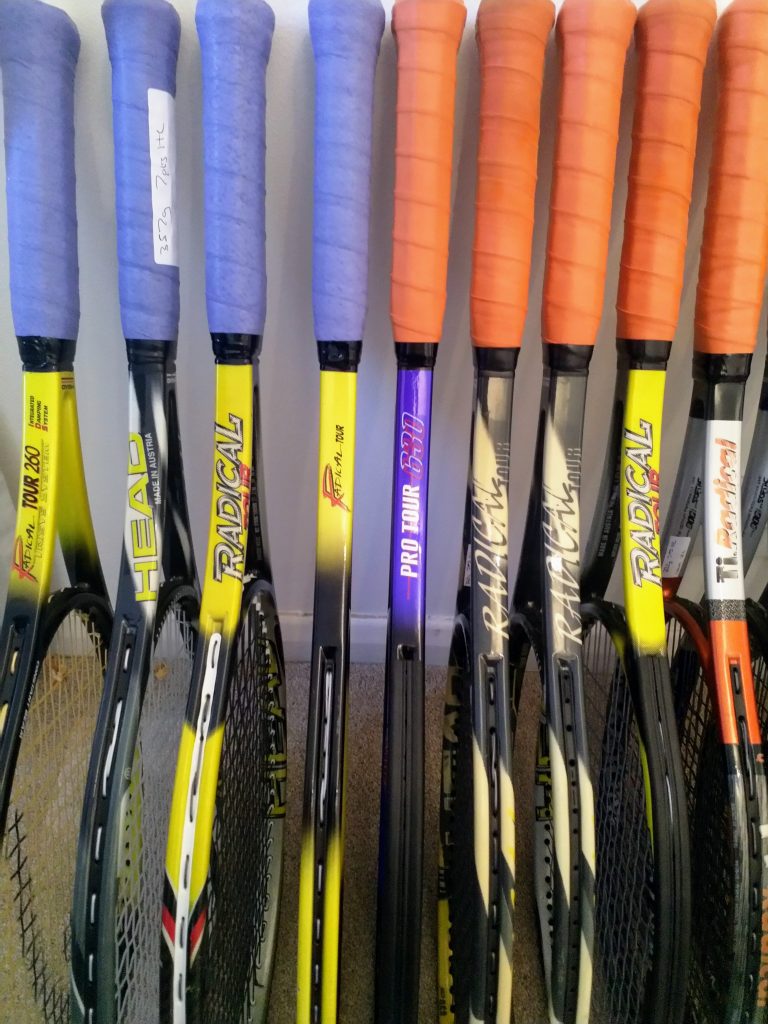
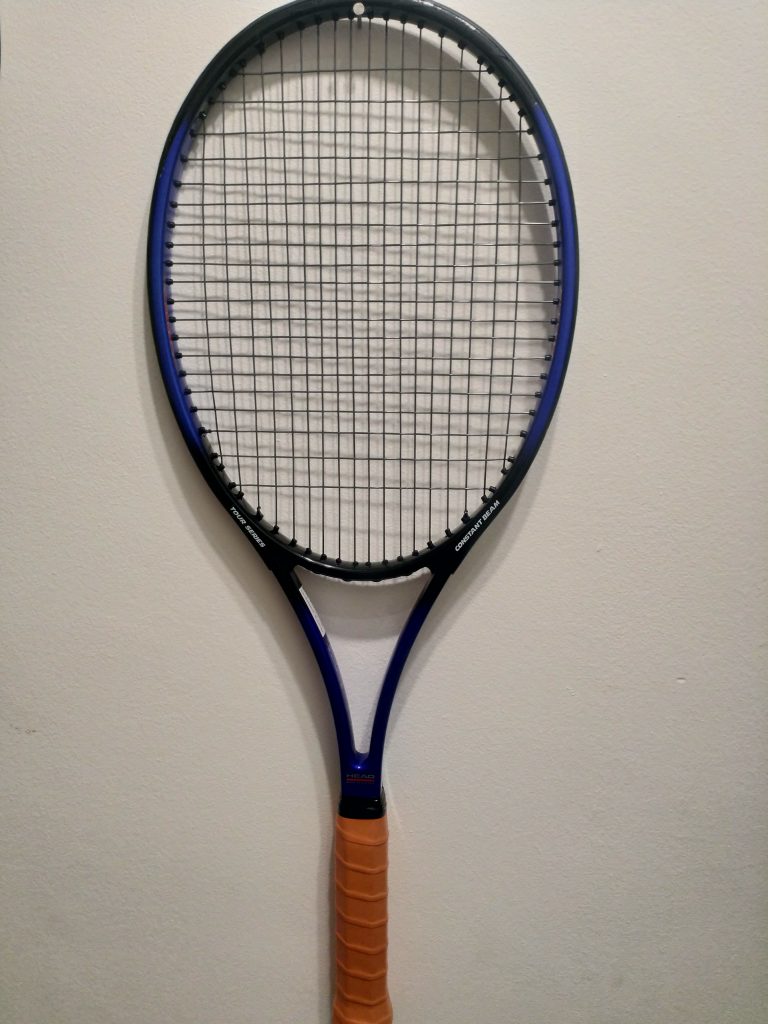
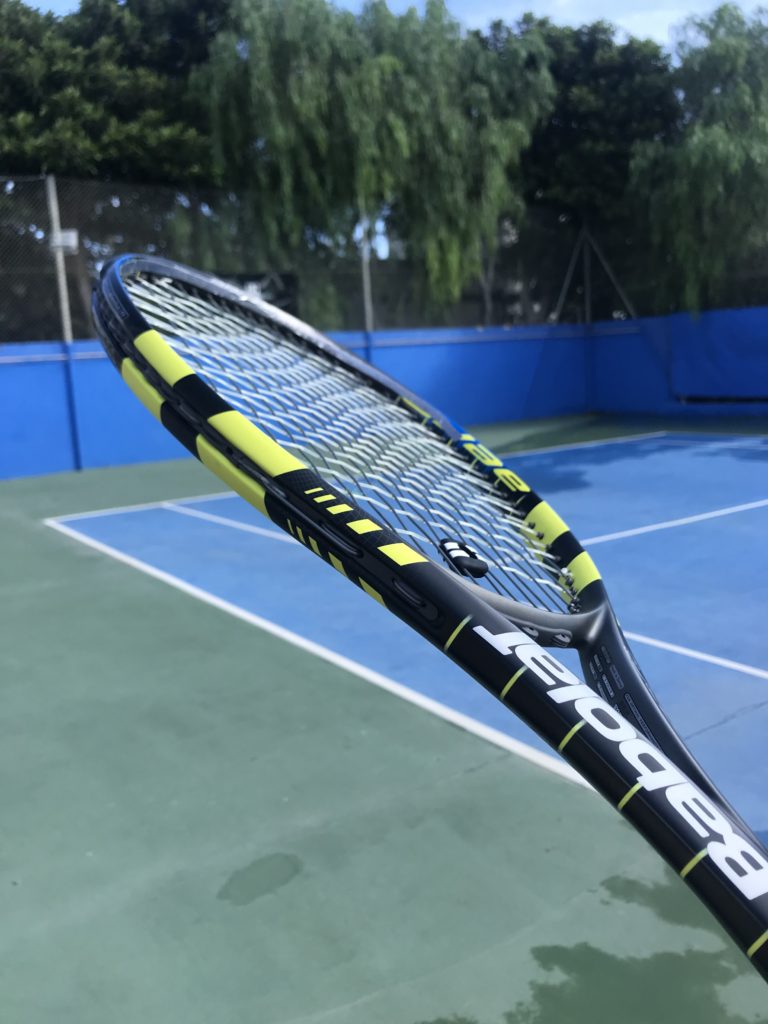
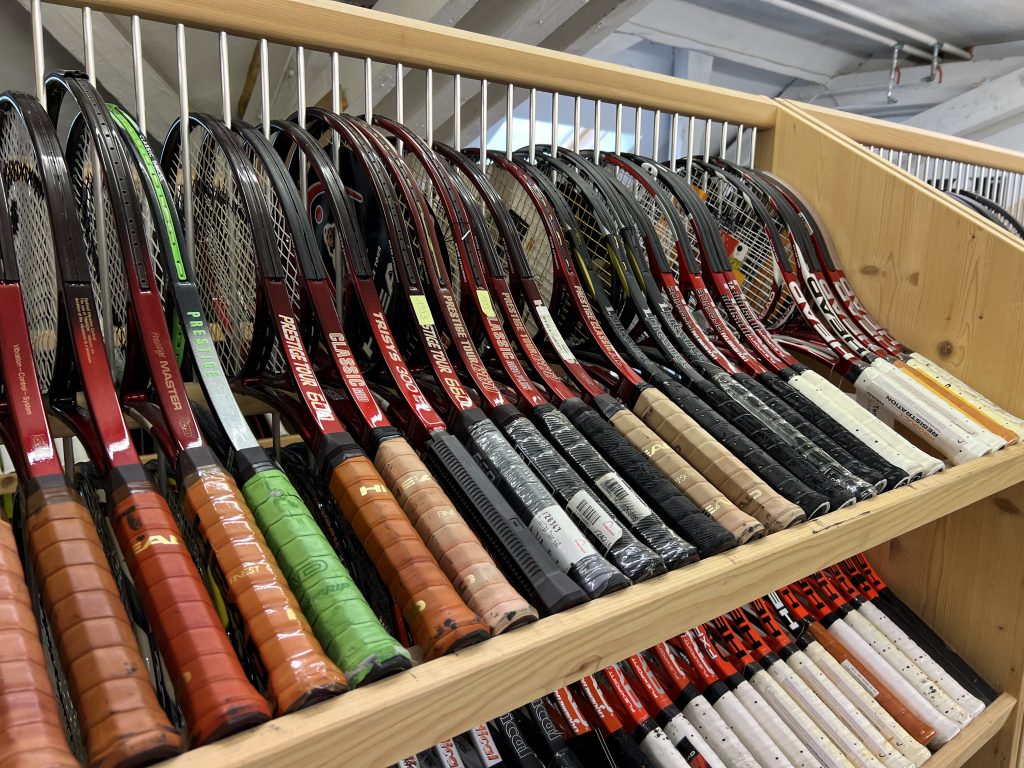
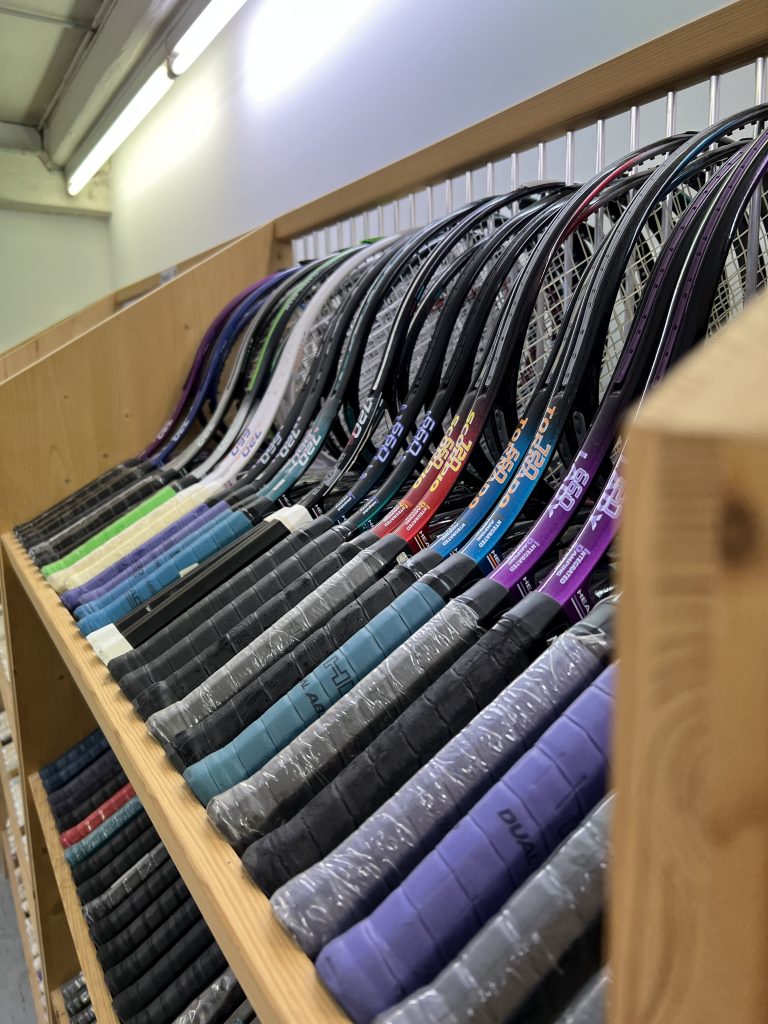
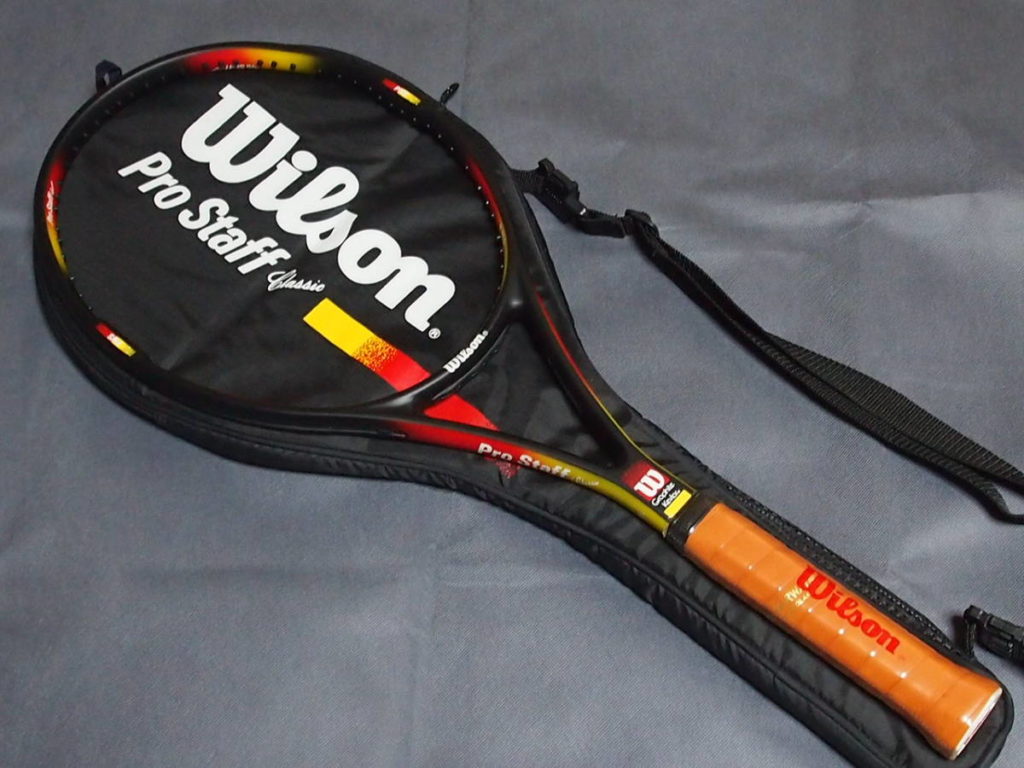

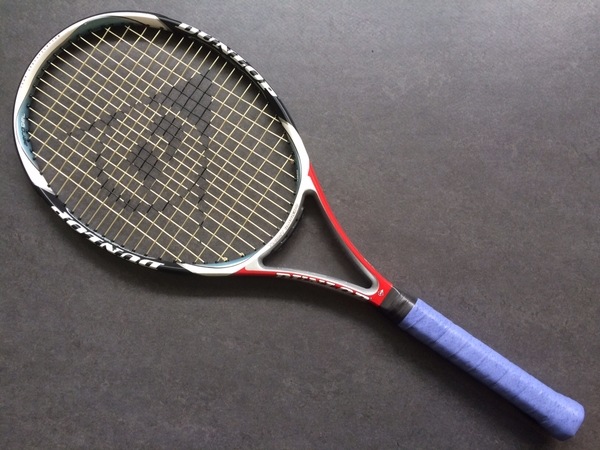
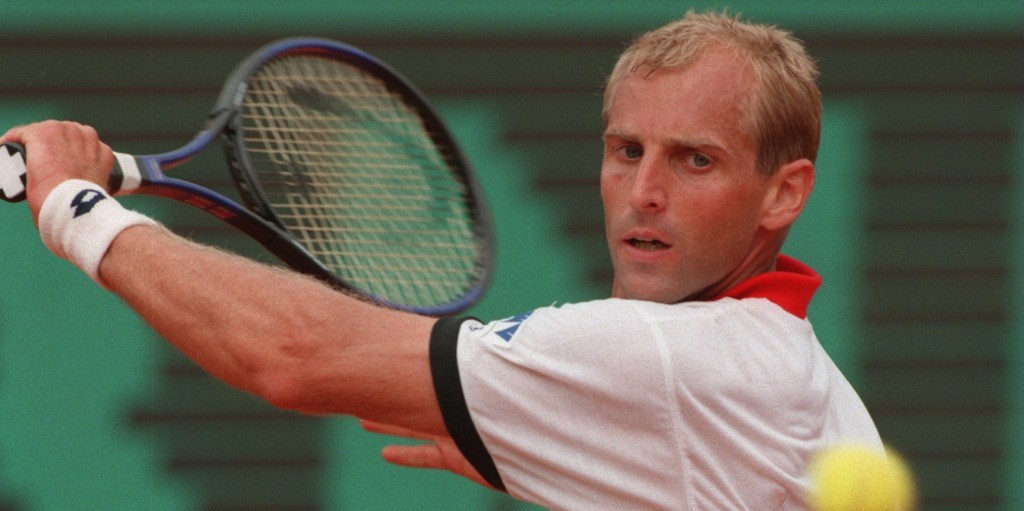
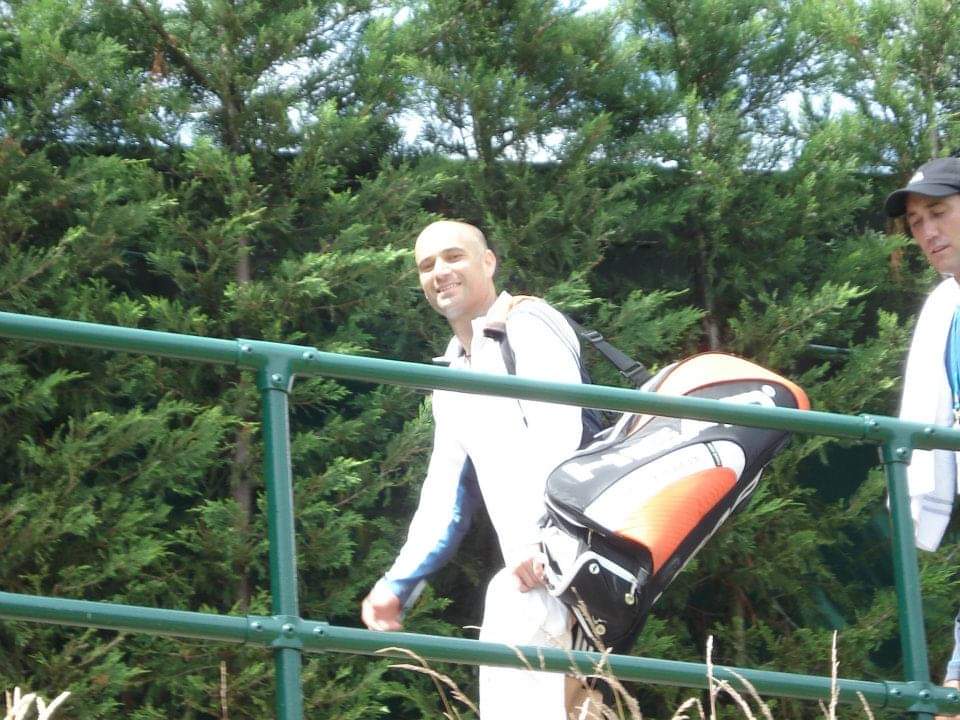
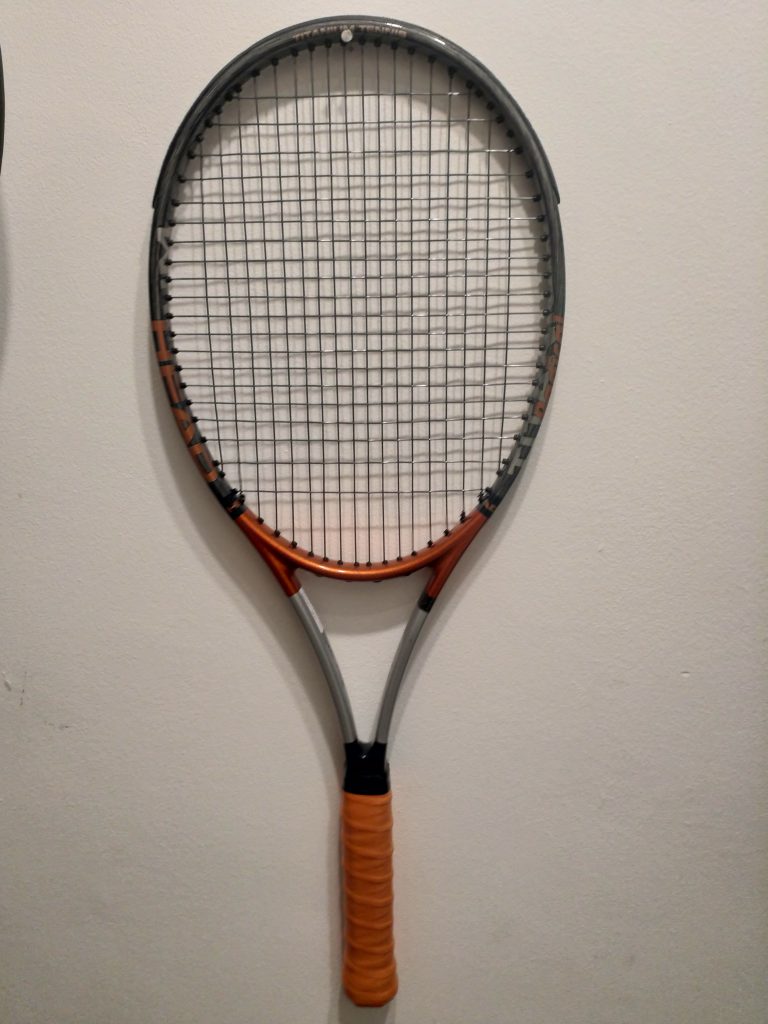
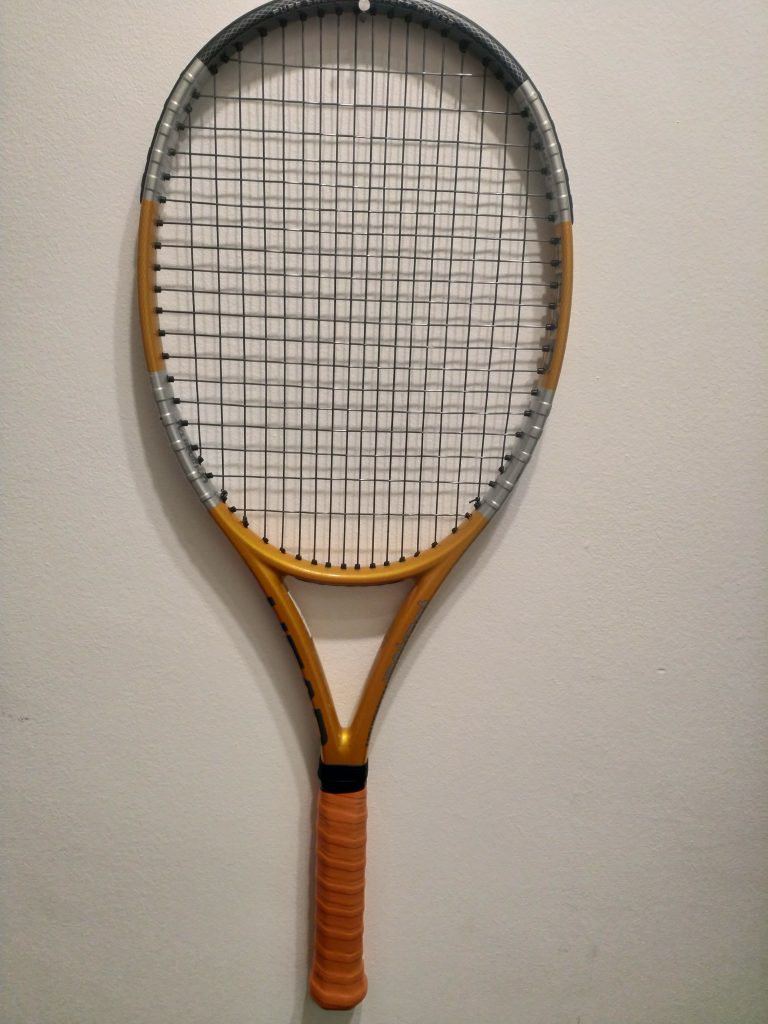
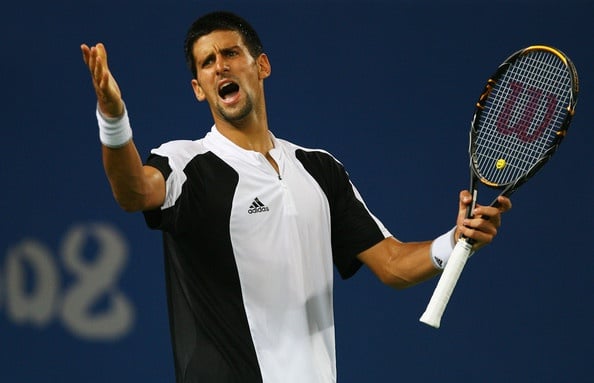
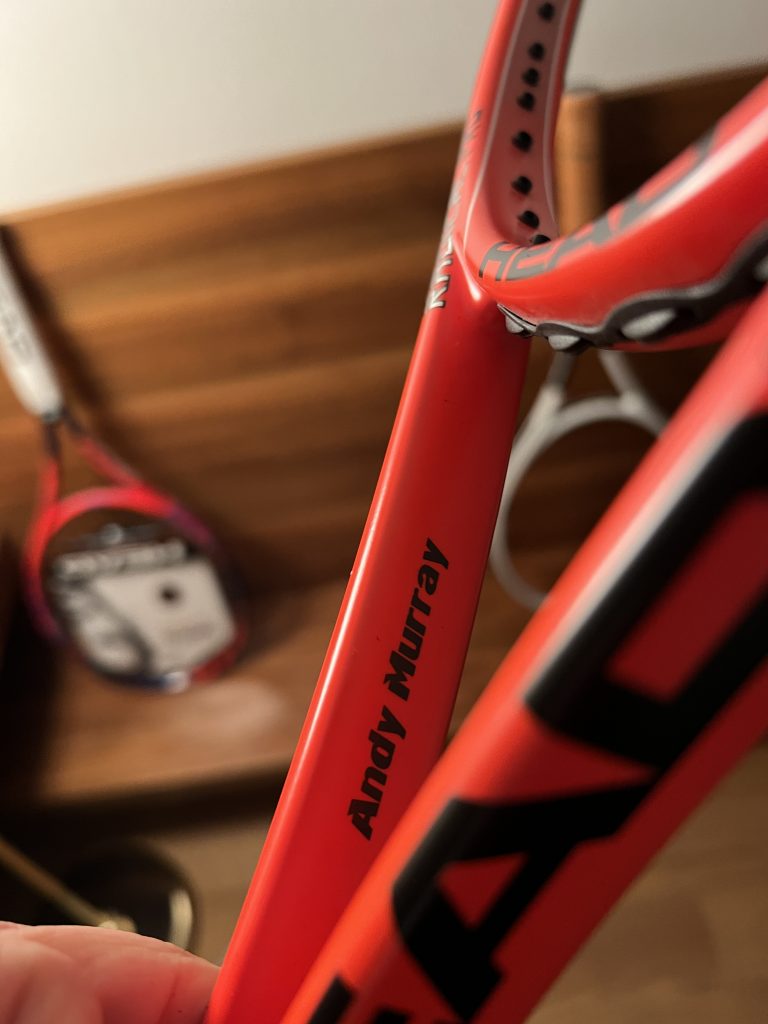
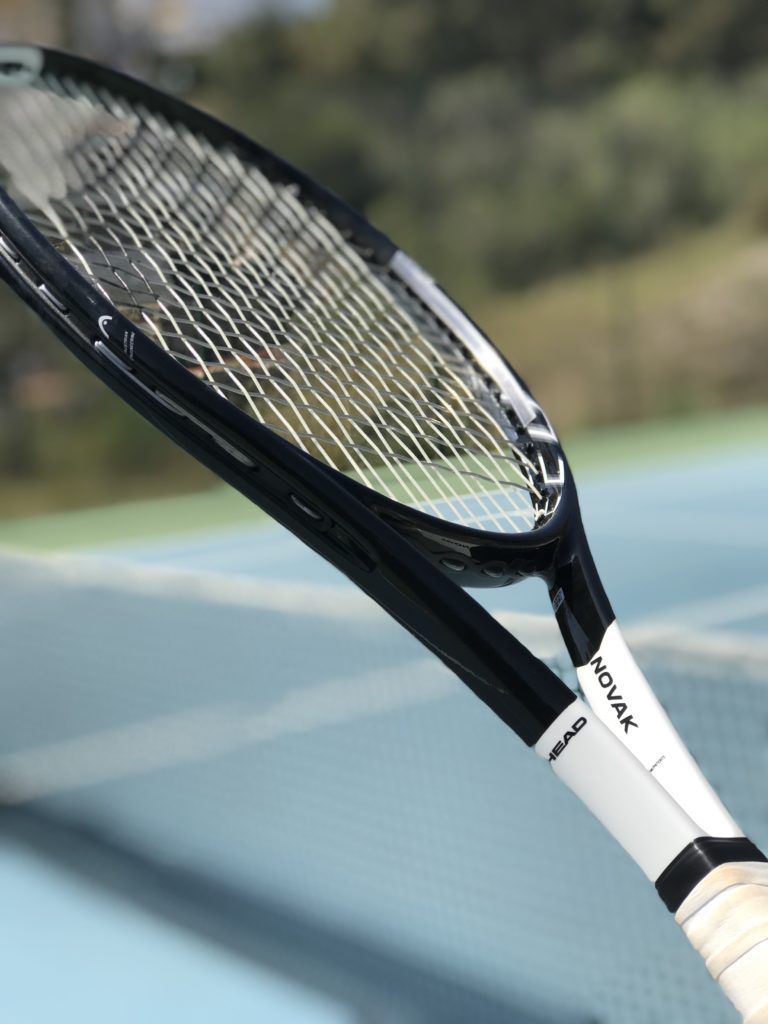

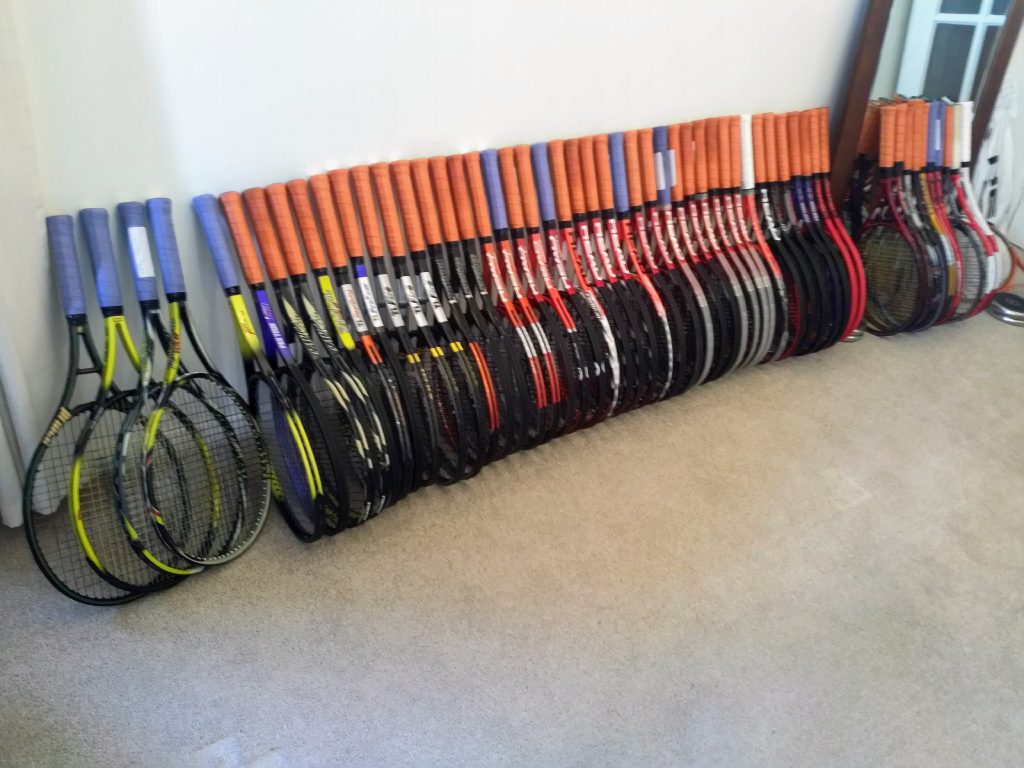

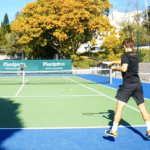

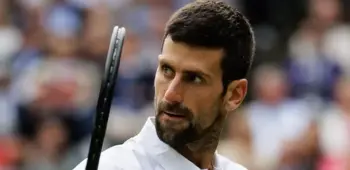
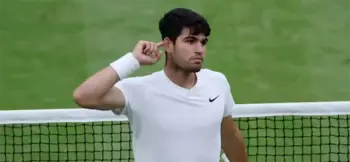
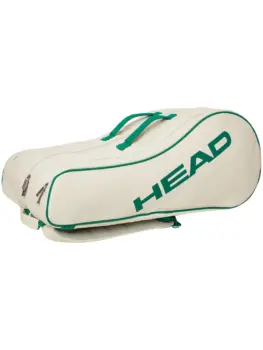

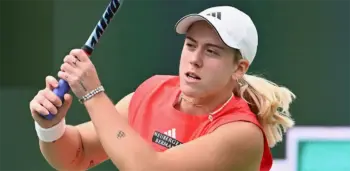
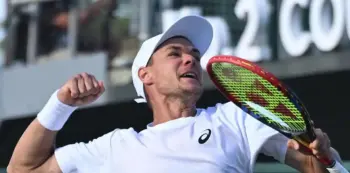
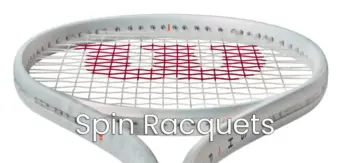
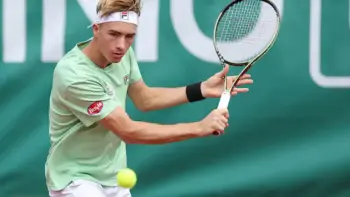

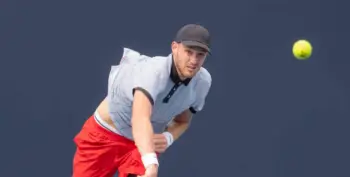
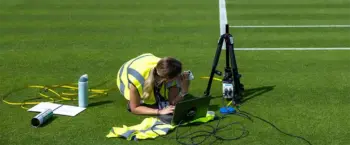

Great article!
This was insanely difficult to read.